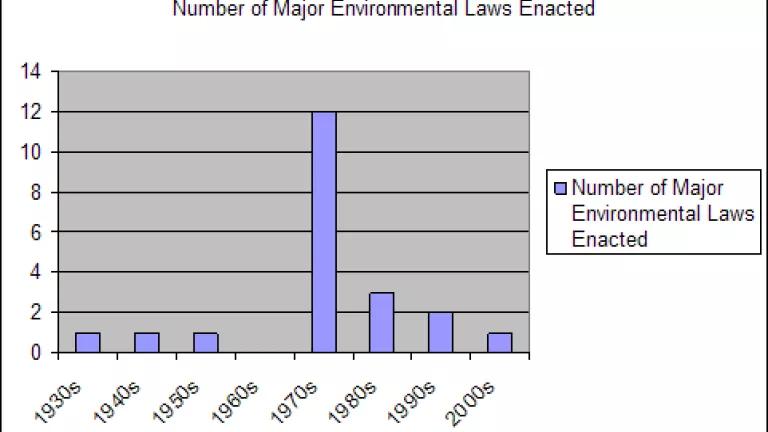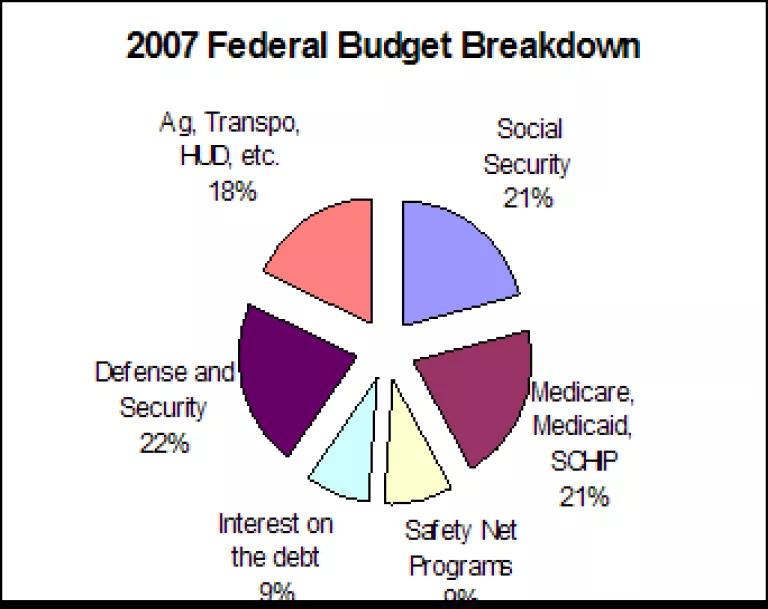
Now that this historic election is past (NRDC is a nonpartisan organization that does not endorse candidates, so I focus on the future in this entry), the new leaders in the Administration and Congress must tackle the nation’s big problems. Shoring up the economy and keeping the nation secure are at the top of that list. So is putting new rules and incentives in place to protect what President-elect Obama rightly called our “planet in peril.”
The last time we fundamentally changed many of the ground rules for doing business in America in order to protect the environment was the 1970s. In that decade, the Environmental Protection Agency was created and cornerstone laws were put into place, including the National Environmental Policy Act, the Clean Air and Water Acts, and the Endangered Species Act. It was a watershed time for protecting the environment, and it has paid off handsomely with improvements in air quality, water quality and protection of cherished flora, fauna and natural resources.
However, the lack of progress in making more of our water bodies fishable and swimmable underscores that much work remains ahead. And global warming pollution trendlines are unrelenting and downright alarming. Yet we have gone through a long dry spell when it comes to making policy that is at-scale to address new environmental challenges, as evidenced by the graph below (based on NRDC’s own list of major laws, with the addition of last year’s Energy Independence and Security Act due to its pollution-cutting boost in fuel economy standards).
The newly elected leadership should focus on making new major environmental policy, providing a much-needed relief plan for the planet. New policy should focus on investing and building our way to energy security and climate stability, by taking steps like these:
Re-Aligning Public Investments
The annual federal budget of almost $3 trillion dollars has far-reaching influence. Most of this funding (60 percent) must be spent on entitlements, safety net programs (such as the refundable portion of earned income tax credits) and interest on the debt, as shown in the graph below from the Center for Budget and Policy Priorities (www.cbpp.org, based on data from the Office of Management and Budget).

About one-fifth of the remainder goes to defense and security, and one-fifth goes to other public investments that have a profound effect on our economy, quality of life and environment. For example, the FY 2008 budgets for the Departments of Agriculture ($89 billion), Transportation ($67 billion) and Housing and Urban Development ($44 billion) add up to $200 billion. That’s some serious funding, and the new Administration and Congress should get to work to eliminate wasteful programs and align useful ones so that they cut global warming pollution and generally protect the environment.
Building Energy-efficient, Low-carbon Infrastructure
One fast-approaching big opportunity is the expiration of current law which shapes our transportation budget, on September 30th of next year. Current law is heavily based on a statute that is nearly 20 years old. As I argued in a recent entry, this creaky policy architecture is a poor fit for a landscape that has changed dramatically in the 2000s. For example, oil addiction and global warming are now key national priorities, yet the old law relies on increased driving as its source of revenue and invests the lion’s share of the returns into highway construction which exacerbates our dependence on burning gasoline. This is wrongheaded, and it is taking us backwards since we should be working on lowering the staggering amount – 4500 gallons a second – of gasoline we must use to meet our daily needs.
Basically, we need energy-efficient, and more specifically oil-efficient, transportation infrastructure for the 21st Century. That means more rail lines, as Europe, Japan and China have built and are building. This is a patriotic, energy-game-changing endeavor, and as such deserves a name and a scale on par with the fifty-year-old statute that launched the era of highway construction, the National Interstate and Defense Highways Act. One of the most thought-provoking concepts I’ve seen comes from conservative icon Paul Weyrich, and it has a great moniker: The National Defense Public Transportation Act. The new law needs to be bound by a vision of a cleaner, less oil dependent future, and to provide reasonable public transportation choices to neighborhoods across the country, with a focus on metropolitan regions where more than 80 percent of us live and which are best-suited for rail and bus options.
The best person within the Administration to work on this, besides the new Secretary of Transportation (someone who needs to be chosen based on his or her hunger for reform of our outdated system), would a new Infrastructure “Czar.” We have a big problem with infrastructure in this nation, and not just with transportation. The electric grid is balkanized and inefficient. Water and sewer infrastructure systems are aging. Air traffic control is ground-based and analog, not satellite-based and digital.
Rallying Public Support for Change
The biggest asset our next President offers the nation is his ability to inspire with soaring rhetoric. He needs to apply that, in spades, to moving the nation forward into what Tom Friedman calls the energy-climate era. Enacting policy that is scaled to fit the challenges and to ensure successful implementation will require broad public support.
The final report cards from this amazing election season are in. We face many tests ahead, and passing them will ensure a brighter future for us and our kids. I’m looking forward to it, and – for the first time in decades -- I hope we get serious about safeguarding our imperiled planet.